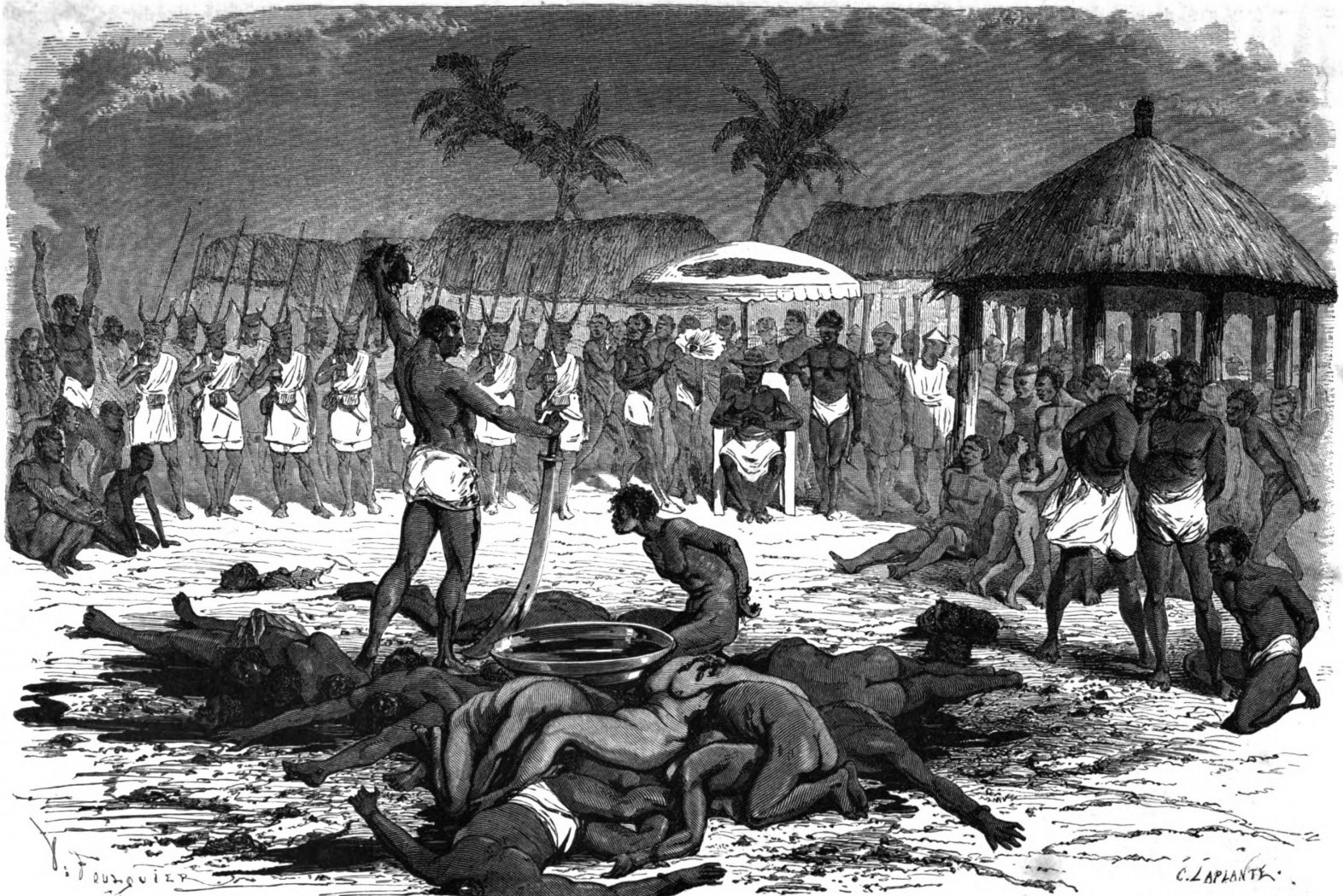|
Bog Body
A bog body is a human cadaver that has been naturally mummified in a peat bog. Such bodies, sometimes known as bog people, are both geographically and chronologically widespread, having been dated to between 8000 BC and the Second World War. Fischer 1998. p. 237. The unifying factor of the bog bodies is that they have been found in peat and are partially preserved; however, the actual levels of preservation vary widely from perfectly preserved to mere skeletons. Van der Sanden 1996. p. 7. Unlike most ancient human remains, bog bodies often retain their skin and internal organs due to the unusual conditions of the surrounding area. Combined, highly acidic water, low temperature, and a lack of oxygen preserve but severely tan their skin. While the skin is well-preserved, the bones are generally not, due to the dissolution of the calcium phosphate of bone by the peat's acidity. The acidic conditions of these bogs allow for the preservation of materials such as skin, hair, nails, ... [...More Info...] [...Related Items...] OR: [Wikipedia] [Google] [Baidu] |
Human Sacrifice
Human sacrifice is the act of killing one or more humans as part of a ritual, which is usually intended to please or appease deity, gods, a human ruler, public or jurisdictional demands for justice by capital punishment, an authoritative/priestly figure, spirits of veneration of the dead, dead ancestors or as a retainer sacrifice, wherein a monarch's servants are killed in order for them to continue to serve their master in the next life. Closely related practices found in some tribe, tribal societies are human cannibalism, cannibalism and headhunting. Human sacrifice is also known as ritual murder. Human sacrifice was practiced in many human societies beginning in prehistoric times. By the Iron Age with the associated developments in religion (the Axial Age), human sacrifice was becoming less common throughout Africa, Europe, and Asia, and came to be looked down upon as barbarian, barbaric during classical antiquity. In the New World, Americas, however, human sacrifice cont ... [...More Info...] [...Related Items...] OR: [Wikipedia] [Google] [Baidu] |
Windeby I Upper-body
Windeby () is a municipality in the district of Rendsburg-Eckernförde, in Schleswig-Holstein, Germany. It is situated approximately 2 km west of Eckernförde. Windeby is part of the '' Amt'' ("collective municipality") Windeby Windeby () is a municipality in the district of Rendsburg-Eckernförde, in Schleswig-Holstein, Germany Germany, officially the Federal Republic of Germany, is a country in Central Europe. It lies between the Baltic Sea and the North Sea .... The seat of the ''Amt'' is in Eckernförde. Windeby is east of the municipality of Fleckeby or Osterby, but north of Goosefeld. Windeby means Wendish village in Danish and indicates a previous Lechite settlement in the village. References Rendsburg-Eckernförde {{RendsburgEckernförde-geo-stub ... [...More Info...] [...Related Items...] OR: [Wikipedia] [Google] [Baidu] |
Human Sacrifices
Humans (''Homo sapiens'') or modern humans are the most common and widespread species of primate, and the last surviving species of the genus ''Homo''. They are great apes characterized by their hairlessness, bipedalism, and high intelligence. Humans have large brains, enabling more advanced cognitive skills that facilitate successful adaptation to varied environments, development of sophisticated tools, and formation of complex social structures and civilizations. Humans are highly social, with individual humans tending to belong to a multi-layered network of distinct social groups — from families and peer groups to corporations and political states. As such, social interactions between humans have established a wide variety of values, social norms, languages, and traditions (collectively termed institutions), each of which bolsters human society. Humans are also highly curious: the desire to understand and influence phenomena has motivated humanity's development of ... [...More Info...] [...Related Items...] OR: [Wikipedia] [Google] [Baidu] |
Röst Girl
Rost, Røst, or Röst may refer to: Places Germany * Tensbüttel-Röst, municipality in the district of Dithmarschen, in Schleswig-Holstein, Germany Norway *Røst Municipality, an island municipality in Nordland county, Norway *Røstlandet (also known as ''Røst''), an island within Røst Municipality in Nordland county, Norway *Røstlandet (village) (also known as ''Røst''), a village in Røst Municipality in Nordland county, Norway *Røst Airport, an airport in Røst Municipality in Nordland county, Norway *Røst Church, a church in Røst Municipality in Nordland county, Norway *Røst Reef, a deep-water coral reef off the coast of the Lofoten islands in Nordland county, Norway United States * Rost Township, Jackson County, Minnesota, township in Jackson County, Minnesota, United States * Rost, Minnesota, unincorporated community, United States People * Andrea Rost (born 1962), a Hungarian lyric soprano * Burkhard Rost (born 1961), a German scientist - computational biologists * ... [...More Info...] [...Related Items...] OR: [Wikipedia] [Google] [Baidu] |
Decomposition
Decomposition is the process by which dead organic substances are broken down into simpler organic or inorganic matter such as carbon dioxide, water, simple sugars and mineral salts. The process is a part of the nutrient cycle and is essential for recycling the finite matter that occupies physical space in the biosphere. Bodies of living organisms begin to decompose shortly after death. Although no two organisms decompose in the same way, they all undergo the same sequential stages of decomposition. Decomposition can be a gradual process for organisms that have extended periods of dormancy. One can differentiate ''abiotic'' decomposition from ''biotic'' decomposition ( biodegradation); the former means "the degradation of a substance by chemical or physical processes", e.g., hydrolysis; the latter means "the metabolic breakdown of materials into simpler components by living organisms", typically by microorganisms. Animals, such as earthworms, also help decompose the organ ... [...More Info...] [...Related Items...] OR: [Wikipedia] [Google] [Baidu] |
Aerobic Organisms
An aerobic organism or aerobe is an organism that can survive and grow in an oxygenated environment. The ability to exhibit aerobic respiration may yield benefits to the aerobic organism, as aerobic respiration yields more energy than anaerobic respiration. Energy production of the cell involves the synthesis of ATP by an enzyme called ATP synthase. In aerobic respiration, ATP synthase is coupled with an electron transport chain in which oxygen acts as a terminal electron acceptor. In July 2020, marine biologists reported that aerobic microorganisms (mainly), in " quasi-suspended animation", were found in organically poor sediments, up to 101.5 million years old, 250 feet below the seafloor in the South Pacific Gyre (SPG) ("the deadest spot in the ocean"), and could be the longest-living life forms ever found. Types *Obligate aerobes need oxygen to grow. In a process known as cellular respiration, these organisms use oxygen to oxidize substrates (for example sugars and fats) ... [...More Info...] [...Related Items...] OR: [Wikipedia] [Google] [Baidu] |
Hypoxia (environmental)
Hypoxia (''hypo'': 'below', ''oxia'': 'oxygenated') refers to low oxygen conditions. Hypoxia is problematic for air-breathing organisms, yet it is essential for many anaerobic organisms. Hypoxia applies to many situations, but usually refers to the atmosphere and natural waters. Atmospheric hypoxia Atmospheric hypoxia occurs naturally at high altitudes. Total atmospheric pressure decreases as altitude increases, causing a lower partial pressure of oxygen, which is defined as hypobaric hypoxia. Oxygen remains at 20.9% of the total gas mixture, differing from hypoxic hypoxia, where the percentage of oxygen in the air (or blood) is decreased. This is common in the sealed burrows of some subterranean animals, such as blesmols. Atmospheric hypoxia is also the basis of altitude training, which is a standard part of training for elite athletes. Several companies mimic hypoxia using normobaric artificial atmosphere. Aquatic hypoxia An aquatic system lacking dissolved oxygen (0% ... [...More Info...] [...Related Items...] OR: [Wikipedia] [Google] [Baidu] |
Pickling
Pickling is the process of food preservation, preserving or extending the shelf life of food by either Anaerobic organism, anaerobic fermentation (food), fermentation in brine or immersion in vinegar. The pickling procedure typically affects the food's texture and flavor. The resulting food is called a ''pickle'', or, if named, the name is prefaced with the word "pickled". Foods that are pickled include vegetables, fruits, mushrooms, meats, fish, dairy and eggs. Pickling solutions are typically highly acidic, with a pH of 4.6 or lower, and high in salt, preventing Enzyme, enzymes from working and micro-organisms from multiplying. Pickling can preserve Decomposition, perishable foods for months, or in some cases years. Antimicrobial herbs and spices, such as mustard seed, garlic, cinnamon or cloves, are often added. If the food contains sufficient moisture, a pickling brine may be produced simply by adding dry salt. For example, sauerkraut and Korean kimchi are produced by salti ... [...More Info...] [...Related Items...] OR: [Wikipedia] [Google] [Baidu] |
Humic Acid
Humic substances (HS) are colored relatively recalcitrant organic compounds naturally formed during long-term decomposition and transformation of biomass residues. The color of humic substances varies from bright yellow to light or dark brown leading to black. The term comes from humus, which in turn comes from the Latin word '' humus'', meaning "soil, earth". Humic substances represent the major part of organic matter in soil, peat, coal, and sediments, and are important components of dissolved natural organic matter (NOM) in lakes (especially dystrophic lakes), rivers, and sea water. Humic substances account for 50 – 90% of cation exchange capacity in soils. "Humic substances" is an umbrella term covering humic acid, fulvic acid and humin, which differ in solubility. By definition, humic acid (HA) is soluble in water at neutral and alkaline pH, but insoluble at acidic pH < 2. Fulvic acid (FA) is soluble in water at any pH. Humin is not soluble in water at any pH. This def ... [...More Info...] [...Related Items...] OR: [Wikipedia] [Google] [Baidu] |




